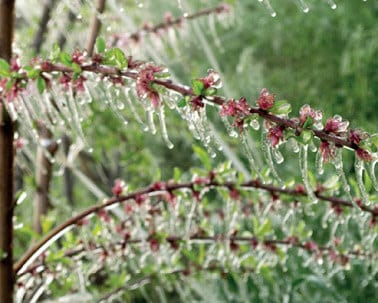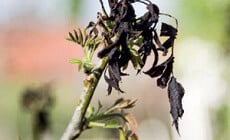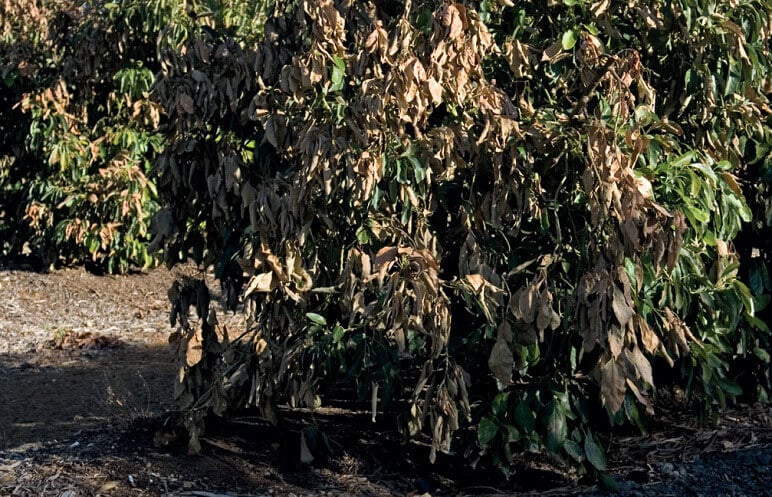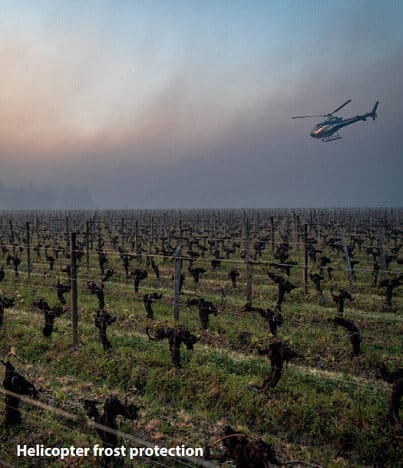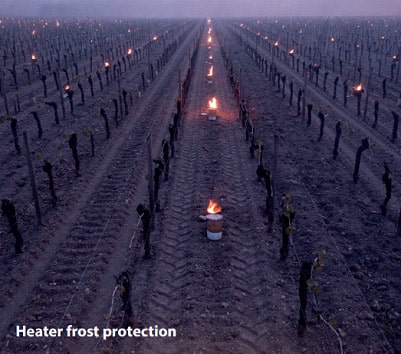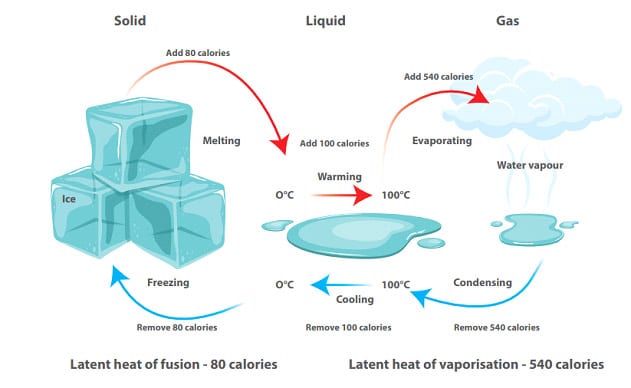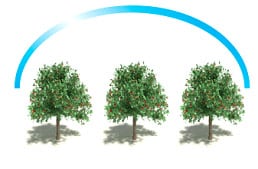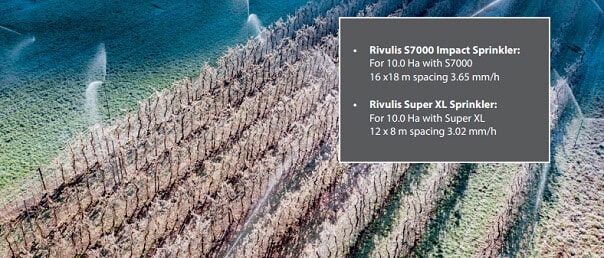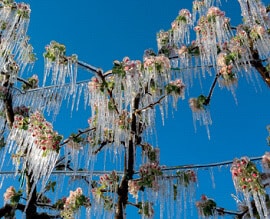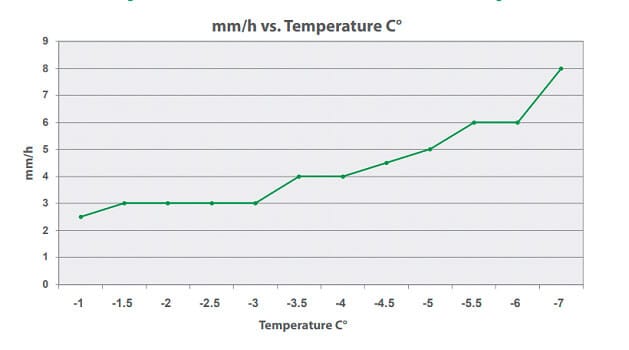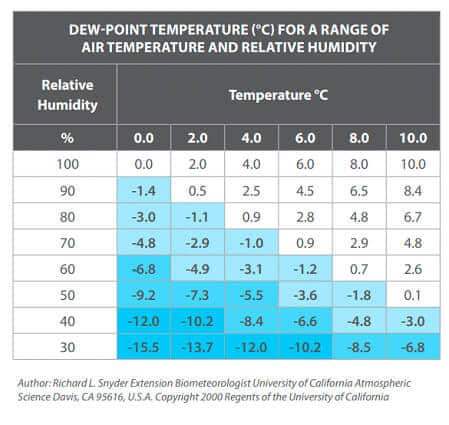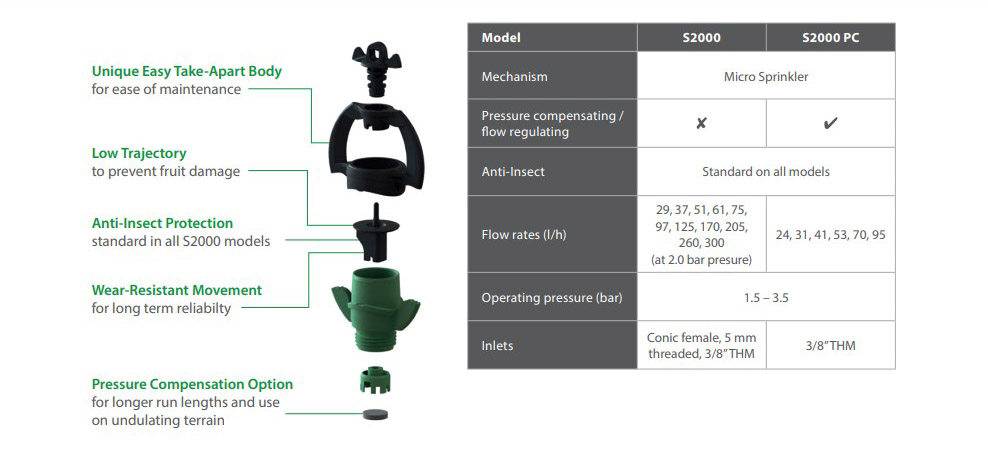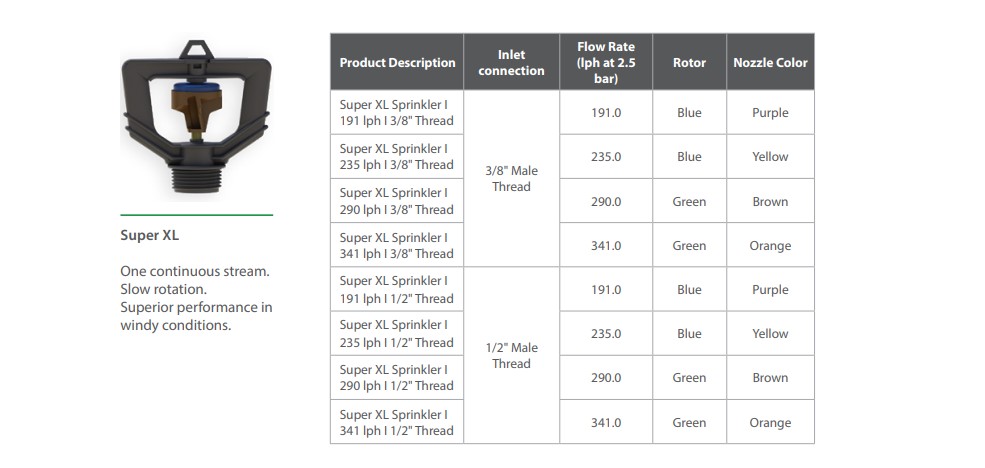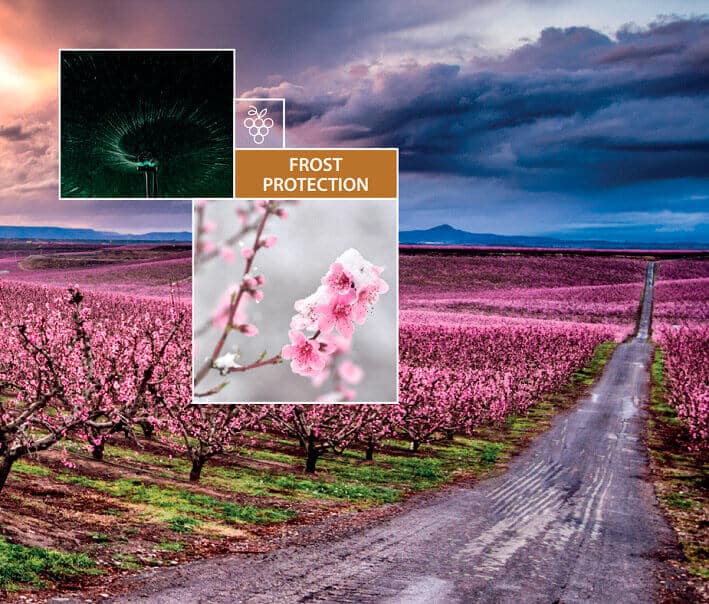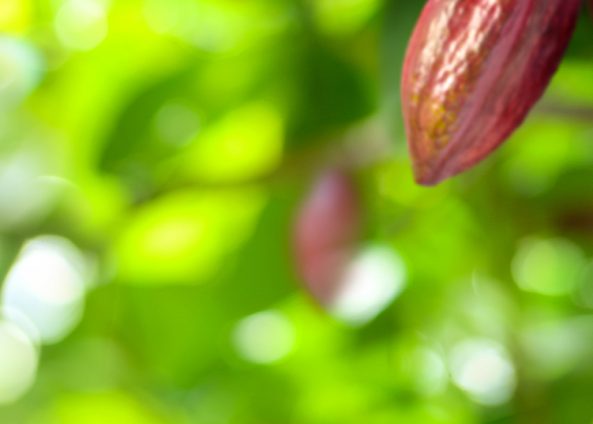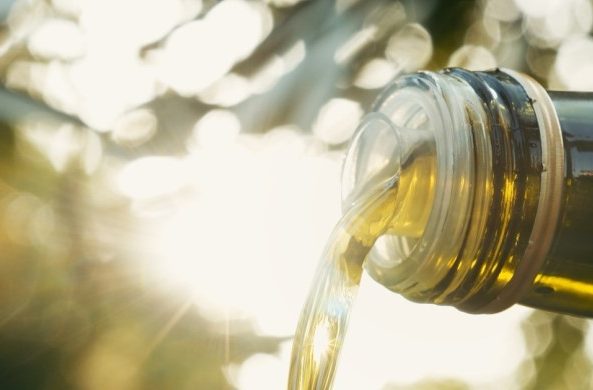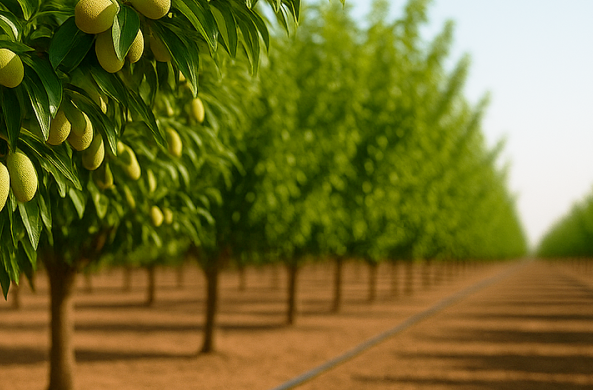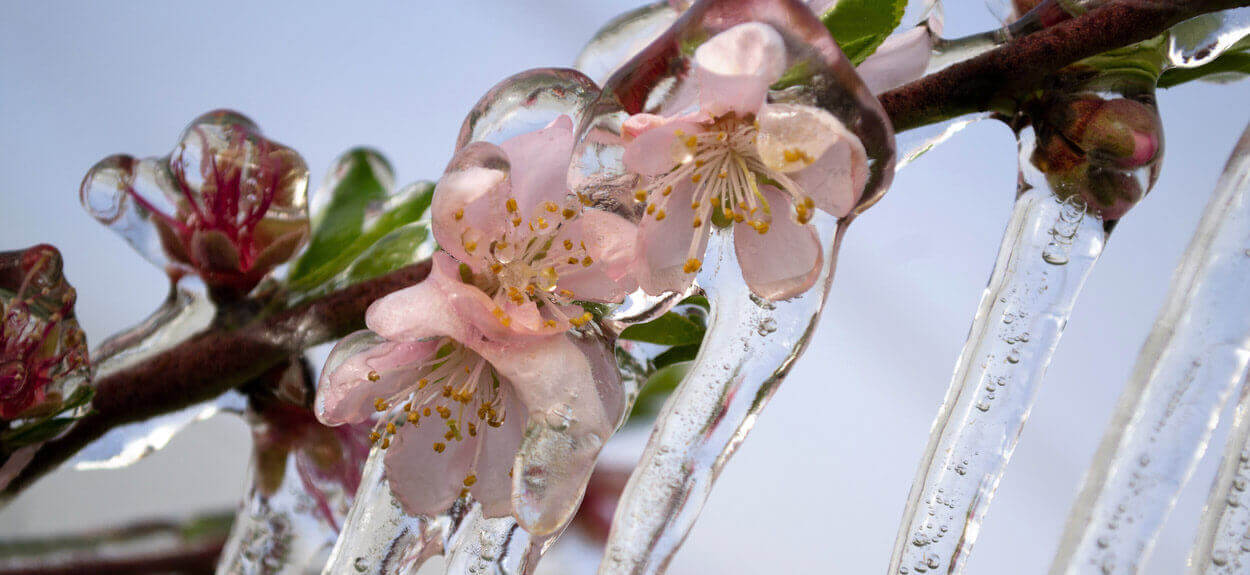
FROST PROTECTION – introductory guide to protecting your investment
The challenge increases
Being a farmer was never easy and facing obstacles and challenges were always part of the game. Competition, tough markets, fresh water availability, land deterioration, new diseases and pests, and the list goes on…
Climate change increases the complexity and the unpredictable nature of the weather, and one of those extreme weather conditions brought forth by climate change is frost. Frost damage poses one of the major threats to agricultural production in recent years.
In 2021, the damage caused by frost alone is estimated to be one of the highest ever to be reported!
“At least a third of French wine production worth almost €2 billion in sales will be lost this year [2021] after rare freezing temperatures devastated many vines and fruit crops across France.“
Freshfruitportal.com
What are we dealing with here…?
There are two kinds of frosts:
Advection Frost
Windy Frost, Arctic Frost or Black Frost
Occurs when a cold air mass (cold front) moves into an area, bringing freezing temperatures with a windspeed usually above 8 km/h.
Possible protection against this kind of frost is very limited.
Radiation Frost
The more common frost encountered in farming
Occurs when with a clear sky and calm winds the temperatures at ground level drop below freezing point.
As temperatures drop, the cold air flows downward to lower topographic areas. That is where most of the damage is seen.
This kind of frost can be dealt with. With the proper tools and understanding even the most severe frost can come and go, and leave no trace when the next day dawns.
Crop Certainty = More Profitability
Spring frost is the most observed and reported in agriculture.
It is common in temperate countries and damages deciduous crops like vineyards, apples, cherries, kiwi, and blueberries and so on.
These crops are naturally adapted to cold winters and can withstand sub-zero temperatures for long periods of time.
The dosage of cold is required so that they shed their leaves in winter and go into dormancy.
Once they bloom and leaf out, they gradually become vulnerable to frost. The farther away they are from dormancy and deeper into spring the more sensitive they become to frost, and the heavier the damage.
In recent years, due to climate change, frosts can occur even during the month of May (Northern Hemisphere) where in many places the crops are well on their way towards summer, leaving them totally unprepared and ill-equipped.
Old standard temperature is the lowest temperature that can be endured for 30 minutes without damage. This chart also shows the temperature that will kill 10 % and 90 % of normal fruit buds. These numbers were taken from Washington (WSU) and Michigan (MSU) Bulletins. Apple – WSU EB0913, Pears – WSU EB0978, Sweet Cherries – WSU EB1128, Peaches – WSU EB0914, Apricots – WSU EB1240, Tart Cherries – MSU Research. Rpt. 220, Compiled by Mark Longstroth, MSU Extension Educator, all photos by Mark Longstroth (MSUE)
Winter frost
Tropical and subtropical crops also require frost protection.
Crops like avocado, litchi, mango, berries, citrus, etc. are being cultivated for decades outside their natural habitat.
These crops are all evergreen and are not equipped to deal with subzero temperatures. Furthermore, in recent years, countries with relatively warm climates, experience extreme frosts during winter.
One night or even less of exposure to subzero temperatures for these tropical and subtropical crops can mean total destruction.
Unlike deciduous crops where frost damages the annual production in evergreen trees the frost damage can impact multiple years and even lead to total lost.
Active frost protection methods
Of the common active frost protection methods, sprinkler frost protection is the most efficient and effective.
Frost protection using latent heat
The principle
When water freezes, it releases heat to its environment. For any substance or material, a solid state is always in a lower energy level. Moving water from a liquid state to a gas state means raising it to a higher energy level therefore requiring the use of energy. The same goes the other way around. The transition of water from liquid to solid means reducing the energy level. The excess energy that is being released actually radiates to the environment as heat. Latent heat is how water can save your plantation or vineyard from frost.
Not just for frost…
The double combo!
Many areas in the world experience severe winters and extreme summers. While a frost protection system can provide protection for winter or spring frost, it can also provide a very good and efficient climate control system.
During a heat wave, having a sprinkler frost protection system, is perhaps the best thing you could wish for.
In the occurrence of a heat wave of high temperatures and very low RH (Relative Humidity) a Rivulis frost protection systems will help save the crop. By activating the system, the air humidity levels will rise substantially and the temperatures will drop, in-turn, alleviating plant stress almost.
Cooling only systems can use lower flow rates but still require good design and water analysis.
Active frost protection with sprinklers
The use of sprinklers for frost protection is one of the most well known, efficient, and reliable methods of frost protection. There are different methods, but the principals are universal. A minimum application rate of 3.0 mm/h is required. This is enough to provide protection at temperatures as low as -3˚C. Another 0.5 mm/h is required for every additional drop of one degree. For example: if the temperature is -4.0˚C, the minimum application rate will be 3.5 mm/h (35 m3/ha/hour).
We will divide the sprinkler frost protection to 3 methods:
Overhead full cover
Targeted individual protection
Under-tree protection
Overhead full cover protection
Using a large sprinkler such as the Rivulis S7000 for wide spacing, or the Super XL for smaller spacing, overhead full cover frost protection is a good solution that can give very good frost protection to the crops with minimum investment (provided the use of a good design, right product and implementation). The overhead full cover method uses heavy duty, high grade, resilient sprinklers positioned strategically over the canopy of the plantation. The whole plot receives high application rate with no blind spots and nothing is left to chance. The overhead full cover method requires a relatively very low number of sprinklers per Ha and is therefore easy to maintain. The drawback of this system is need a high volume of water to operate.
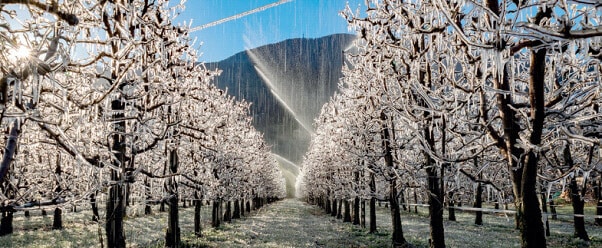
Targeted individual protection
This method uses overhead micro sprinklers such as the Rivulis S2000 / Rondo micro-sprinklers. In this case, a single sprinkler is positioned above each and every tree, and its flow rate and the wetting area it provides protect the specific tree. Targeted protection has the distinct advantage using lower flow rates compared to the overhead full cover method. Subsequently, the water requirements per Ha are also much lower. Besides the fact that lower water requirements provide operational savings, it also means that with a given amount of available water, the farmer can actually provide protection for a larger area. The targeted protection method provides localized frost protection by targeting the trees and the trees alone, thus, avoiding the irrelevant spaces between the rows. Providing that the system was properly designed, the targeted protection method is much more water use and economically efficient. Tropical and subtropical crops that might be subjected to winter frosts are very suitable for this approach and can benefit a lot from a targeted frost protection.
Under-tree protection
Sprinklers positioned under the trees in a plantation also have the ability to provide frost protection. In some cases, this might act as an incentive for choosing one kind of irrigation approach over another. In other cases, plantations which are being irrigated by under-tree sprinklers can benefit from it by already having a functional frost protection system. Sprinklers such as Rivulis S2000, Rondo, and Super XL are well suited for both irrigation and frost protection purposes. Some people favor this kind of frost protection method because it does not necessitate an additional system and it is already there from day one. However, the under-tree method is limited. This method can provide frost protection under temperatures no lower than -2.0˚C. Even then, under certain circumstances, while providing protection to the lower layers of the tree, some damage can occur in the higher layers. In short, under-tree protections is an adequate option, but only for specific conditions.
Getting the right design
In the previous pages, there are examples of typical designs of the three common active frost protection methods using sprinklers. However, there is no one size fits all.
In fact, every system is unique and is impacted by:
- Method: Overhead / individual / under-tree frost protection
- Application rate required: Heavily impacted by the minimum temperature it will need to provide protection for (see graph below)
- Sprinkler used: Rivulis S2000, Rondo, Super XL, or S7000
- Crop spacing and layout
Rivulis Hydraulic Design Services
Don’t leave it to chance. Rivulis has decades of experience of designing frost protection systems around the world. Our team of engineers will design for you a system that gives you the best chance of protection against frost, while also providing a system that is economical, both in terms of up-front and ongoing costs.
Water requirement: mm/h vs temperature
When to start up your frost protection sprinkler irrigation system
Knowing when to activate your frost protection system is critically important. There are multiple theories and models and calculations to determine the precise point of activation. We will try and make things as simple as possible.
Be careful When water evaporates (turning from liquid to gas) it absorbs energy and cools its environment. However, when the sprinklers are first activated, they actually cause the temperature to drop. It is only when the evaporation ceases that the actual frost protection begins. In other words, activating the system too late might cause more harm than good. The dryer the air, the longer the evaporation process. The higher the RH (relative humidity) the faster the evaporation ceases. Knowing the “Dew point” allows you to determine the point of system activation.
Dew points are sometimes available on line. However, knowing the RH and the temperatures, the table below can help you find the dew point quickly.
Generally, crop sensitivity to freezing temperature increases from first bloom to the small nut / fruit stages. This is when a crop is most likely to be damaged. Sensitivity is also higher when warm weather has preceded a frost night.
Recommendations for starting and stopping temperature that are given here can be used for either over-plant or under-plant sprinklers. All sprinklers in a protection area should be activated when the air temperature drops to the temperature selected from table above. This ensures that the wet-bulb temperature will be above the critical damage temperature. Emitters can be turned off when the air temperature exceeds the value from table.
Rivulis S2000 Micro Sprinkler
- Overhead full cover protection
- Targeted individual protection (non-PC model only)
- Under-tree protection (either PC or non-PC model)
For more information – click here
Rivulis S7000 Impact Sprinkler
For more information – click here
Rivulis Super XL Sprinkler
- Overhead full cover protection (small spacing only)
- Targeted individual protection
- Under-tree protection
For more information – click here
The keys to frost protection success:
- High quality hydraulic design.
- Reliable head control with sufficient filter capacity.
- Ensure the system is ready and test it well before a frost event is expected
- Be in the field to monitor during the event.
- Keep an eye on hydraulic components as they can freeze.
- Monitor temperatures constantly.
- Stay informed about the weather.
- Monitor flow and pressure of the system.
- Be ready to act with tools and spare parts.
- Make improvements as needed after frost events.
Case study outcomes are for information purposes only and actual results may vary. This literature has been compiled for worldwide circulation and the descriptions, photos, and information are for general purpose use only. Please consult with an irrigation specialist and technical specifications for proper use of Rivulis products. Because some products are not available in all regions, please contact your local dealer for details. Rivulis reserves the right to change specifications and the design of all products without notice. Every effort has been used to ensure that product information, including data sheets, schematics, manuals and brochures are correct. However information should be verified before making any decisions based on this information.



